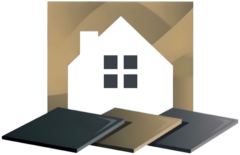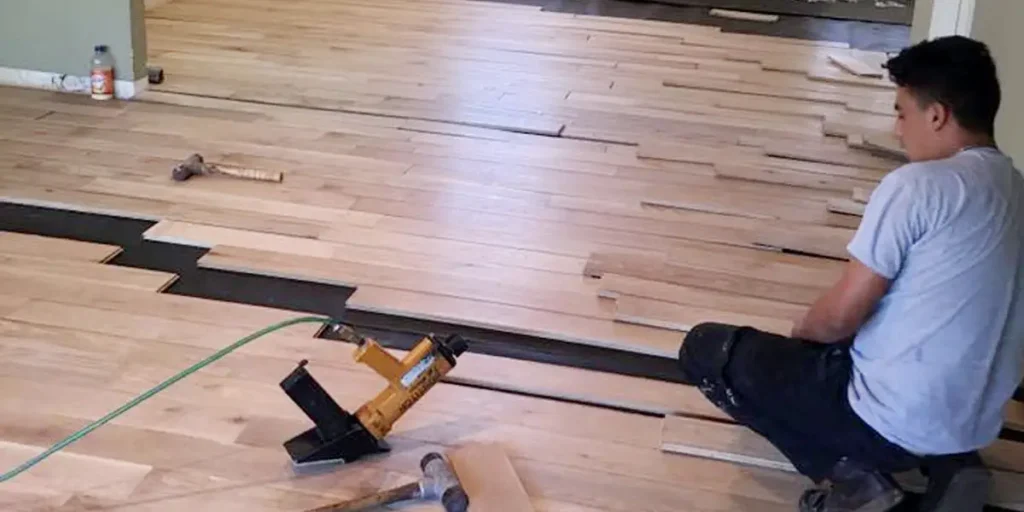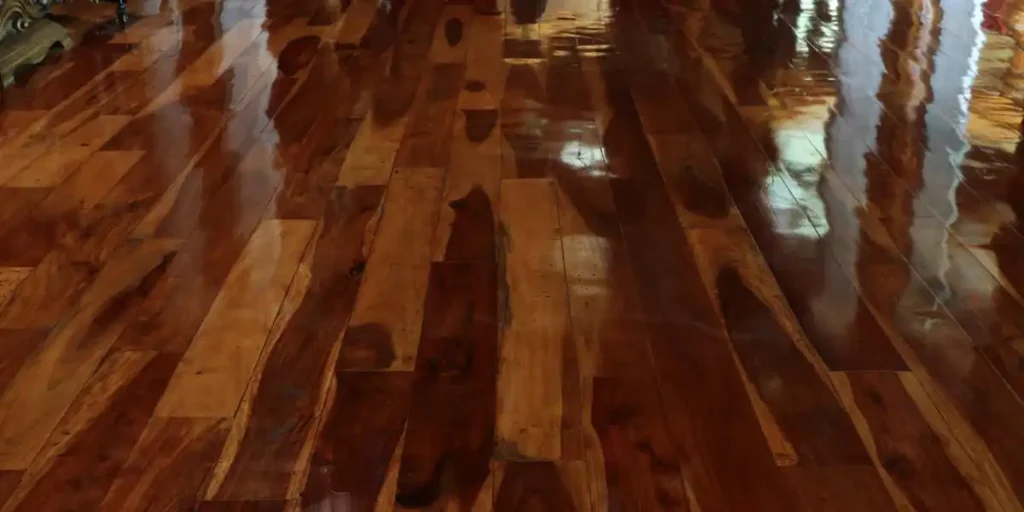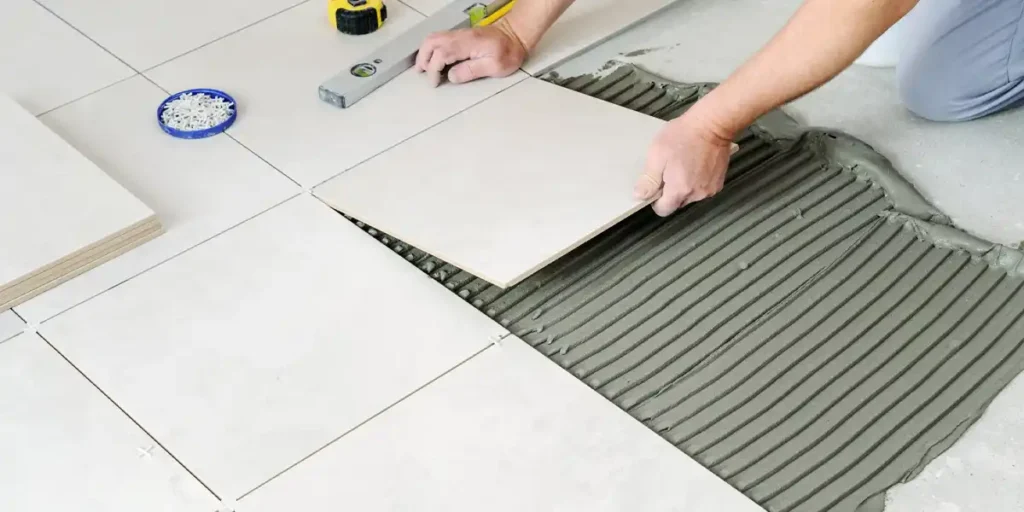Picture this: you walk into a room with wide planks of wood underfoot, their grain catching the light beautifully. The floor feels solid, looks high-end, and doesn’t make you worry about the everyday wear and tear of modern living. That’s the promise of engineered hardwood flooring.
When designing or updating your home, flooring is crucial in setting the tone for your space. It’s the foundation that ties together your furniture, decor, and overall vibe. Engineered hardwood flooring offers the timeless look of real wood with added durability and flexibility, making it a top choice for today’s homeowners.
In this blog, we’ll explore why engineered hardwood flooring stands out, its unique benefits for modern homes, and how it compares to other flooring options.
Understanding Engineered Hardwood Flooring
Engineered hardwood flooring offers a modern twist on the classic appeal of solid wood. It’s designed to combine style, durability, and versatility, making it a popular choice for homeowners looking to balance aesthetics with practicality. Let’s break it down.
What is Engineered Hardwood Flooring?
Engineered hardwood flooring is a type of flooring that uses a real hardwood veneer on top of a layered plywood or high-density fiberboard (HDF) core. This structure provides the look and feel of solid hardwood while addressing some of its limitations.
Think of it as a smarter approach to traditional wood floors. The top layer, made from real wood, gives it the authentic beauty of natural grain patterns and textures. Beneath that, the core layers are engineered for stability, resisting warping or buckling in conditions where solid wood might struggle. This makes it suitable for areas like basements or rooms with fluctuating humidity levels.
How Engineered Hardwood Flooring is Made
The manufacturing process of engineered hardwood flooring is all about creating a durable and reliable product without sacrificing beauty.
- Top Layer: The top layer, also known as the wear layer, is a thin slice of real hardwood. It comes from species like oak, maple, or walnut, offering the same rich look and feel as solid wood.
- Core Layers: Beneath the veneer are multiple layers of plywood or HDF, arranged in a cross-grain pattern. This structure provides enhanced stability, making the flooring resistant to expansion, contraction, or warping.
- Bottom Layer: A backing layer made from wood or composite materials adds further stability and ensures the planks remain level.
This layered design not only extends the lifespan of the flooring but also allows for easier installation and compatibility with various subfloors, including concrete.
Popular Finishes and Styles
One of the reasons engineered hardwood flooring is so popular is its variety of finishes and styles, making it adaptable to different tastes and home designs.
- Matte Finishes: Matte finishes are perfect for modern homes aiming for a sleek, understated look. They’re also practical, as they hide scratches and dirt better than glossier options.
- Glossy Finishes: If you want to add a bit of shine and elegance to your space, glossy finishes deliver a polished and sophisticated vibe.
- Textured Options: Hand-scraped or wire-brushed finishes add texture and character, giving your floors a more rustic or vintage feel while still fitting into contemporary aesthetics.
As for styles, wide planks are a favorite in open-concept spaces, while narrower planks work well in traditional layouts. You can also choose from various wood species, each offering unique grain patterns and colors to match your home’s design.
Benefits of Engineered Hardwood Flooring for Modern Homes
Engineered hardwood flooring brings together form and function. It’s a versatile choice that meets the demands of modern living while enhancing the look of any space.
Withstanding Humidity and Temperature Changes
Engineered hardwood flooring is designed to handle changes in humidity and temperature better than traditional solid wood. Its layered construction makes it more stable, preventing warping, buckling, or cracking in areas with fluctuating conditions.
For example, if you live in a region with hot summers and cold winters, engineered hardwood will adapt better than solid wood flooring. This makes it a great option for basements, kitchens, or any room where moisture levels vary.
Enhancing Modern Interior Design Themes
Modern homes often emphasize clean lines, open spaces, and contemporary aesthetics. Engineered hardwood flooring complements these themes perfectly. With a wide range of finishes and wood species available, you can match the flooring to minimalist, industrial, or mid-century modern designs.
Light-colored planks can brighten a room, while darker tones add a sense of sophistication. Engineered hardwood’s versatility ensures it fits seamlessly into any design vision.
Perfect for Open-Concept Living Spaces
Open-concept layouts are a hallmark of modern homes, and engineered hardwood flooring enhances these spaces. Wide planks create a cohesive look, helping rooms flow naturally into one another.
The flooring’s durability ensures it can handle high foot traffic often found in connected spaces like kitchens, dining areas, and living rooms. Its ability to maintain a uniform appearance across large areas makes it ideal for open-concept designs.
Simplifying Cleaning and Maintenance
For busy households, engineered hardwood flooring offers easy maintenance. The top wear layer resists stains and scratches, making daily cleaning straightforward. A quick sweep or light mop is usually enough to keep it looking great.
Unlike carpets that trap dust and allergens, engineered hardwood provides a cleaner surface, contributing to better indoor air quality. Its durability also means fewer repairs or refinishing jobs over the years.
Eco-Conscious Flooring Choice
If sustainability is a priority, engineered hardwood is an eco-friendly option. Its construction uses less solid wood compared to traditional hardwood flooring, preserving natural resources.
Many manufacturers also source wood from sustainable forests or use non-toxic adhesives, reducing the environmental impact. By choosing engineered hardwood, you’re making a greener choice for your home.
Affordable Luxury for Modern Budgets
Engineered hardwood provides the luxurious look of solid wood at a more accessible price point. It allows homeowners to achieve high-end aesthetics without exceeding their budget.
Additionally, its durability reduces long-term costs associated with repairs and replacements. For those who want stylish, durable flooring without breaking the bank, engineered hardwood is a smart investment.
Comparing Engineered Hardwood to Other Flooring Options
Choosing the right flooring involves understanding the differences between materials. Engineered hardwood offers unique advantages that set it apart from other popular options.
Engineered Hardwood vs. Solid Hardwood
Engineered hardwood stands out when compared to solid hardwood in several ways. While solid hardwood offers a classic, timeless appeal, it is more susceptible to warping and shrinking in fluctuating conditions. Engineered hardwood, with its layered construction, resists these issues, making it a better choice for spaces like basements or kitchens. Additionally, engineered hardwood is often more affordable and easier to install, especially for DIY enthusiasts.
Solid hardwood can be sanded and refinished multiple times, giving it a longer lifespan in some cases. However, the wear layer on engineered hardwood allows for refinishing at least once or twice, meeting the needs of most homeowners.
Engineered Hardwood vs. Laminate
Laminate flooring is often seen as a budget-friendly alternative, but it lacks the natural look and feel of engineered hardwood. While laminate uses a printed image to mimic wood, engineered hardwood features a real wood veneer, offering an authentic appearance. Engineered hardwood also provides better durability, especially in high-traffic areas, and can increase a home’s resale value more effectively than laminate.
Laminate is easier to install and maintain, but it doesn’t offer the same longevity. Engineered hardwood strikes a balance between aesthetics, durability, and ease of care, making it a superior option for modern homes.
Engineered Hardwood vs. Vinyl Plank Flooring
Vinyl plank flooring is another popular option, particularly for its water resistance and affordability. However, engineered hardwood surpasses vinyl in terms of elegance and natural beauty. The real wood veneer gives engineered hardwood a tactile and visual appeal that vinyl cannot replicate.
Vinyl excels in areas prone to moisture, such as bathrooms, but engineered hardwood is a better investment for spaces where style and durability matter most. Its ability to enhance a home’s aesthetic and resale value makes it a worthwhile choice for living rooms, bedrooms, and open-concept designs.
Why Engineered Hardwood Flooring is Perfect for Modern Homes
Engineered hardwood combines elegance and practicality, making it ideal for modern spaces. Its adaptability ensures it complements both architectural and lifestyle needs.
Adaptability to Modern Architectural Designs
Engineered hardwood flooring complements modern architectural styles with its versatility and range of options. Wide planks create a sense of spaciousness, while various finishes allow homeowners to customize the look to suit minimalist, industrial, or Scandinavian themes. Its ability to seamlessly transition between rooms makes it ideal for open-concept layouts.
Compatibility with Modern Technologies
Modern homes often incorporate technologies like underfloor heating or soundproofing. Engineered hardwood is compatible with these innovations due to its stable construction. The planks can withstand the heat from radiant heating systems without warping, ensuring comfort and durability. Additionally, its layered design can help reduce noise, making it a great choice for home offices or entertainment areas.
Budget-Friendly Luxury
Engineered hardwood offers a luxurious aesthetic without the high price tag of exotic solid hardwood. Its cost-effectiveness, combined with durability, makes it a smart investment for modern homeowners. The reduced need for repairs and replacements further enhances its value, providing both style and practicality at a reasonable price point.
Choosing the Right Engineered Hardwood for Your Home
Making the right choice in engineered hardwood flooring requires careful consideration of several factors. This ensures the flooring meets both your aesthetic and practical needs.
Factors to Consider When Buying
When purchasing engineered hardwood, focus on the thickness of the top veneer, the type of core material, and the durability of the finish. Thicker wear layers allow for refinishing, which extends the flooring’s lifespan. The core material, whether plywood or high-density fiberboard, impacts stability and moisture resistance. Finally, choose a finish that suits your lifestyle, especially in high-traffic areas.
Best Rooms for Engineered Hardwood Flooring
Engineered hardwood works well in most areas of the home, but it’s particularly suited for living rooms, dining rooms, and bedrooms where elegance is desired. Its stability also makes it a great option for basements and kitchens, where humidity might otherwise be an issue. However, it’s not recommended for bathrooms or spaces with frequent standing water.
Where to Buy High-Quality Engineered Hardwood Flooring
Purchase from reputable suppliers who provide detailed specifications about the flooring’s construction and warranty. Look for retailers offering samples to ensure the color, texture, and finish match your expectations. Reading reviews and asking for referrals can help you make a confident decision.
Common Misconceptions About Engineered Hardwood Flooring
Misunderstandings about engineered hardwood can prevent homeowners from making the most of this versatile option. Let’s debunk a few common myths.
Myth: It’s Not Real Wood
Engineered hardwood has a real wood veneer on top, making it an authentic hardwood product. The layers beneath enhance its stability without compromising the look and feel of natural wood.
Myth: It’s Less Durable Than Solid Hardwood
While solid hardwood can be sanded more times, engineered hardwood offers excellent durability. Its layered construction resists warping and is better suited for areas with fluctuating humidity or temperature.
Myth: It’s Too Expensive
Engineered hardwood is often more affordable than solid hardwood while delivering a comparable appearance. Its cost-effectiveness and durability make it a long-term investment that pays off over time.
Wrapping It Up
Engineered hardwood flooring offers a perfect balance of beauty, durability, and versatility. It adapts to modern architectural styles, complements technological innovations, and delivers luxury within a reasonable budget. Whether you’re renovating or building a new home, engineered hardwood is a smart and stylish choice that stands the test of time.
Want the best-engineered hardwood flooring? Contact Cardenas Flooring today.
FAQs
1. Can engineered hardwood be refinished?
Yes, depending on the thickness of the top veneer. Thicker layers can be sanded and refinished once or twice.
2. Is engineered hardwood suitable for basements?
Yes, it resists moisture better than solid hardwood, making it a great option for basements.
3. How do I clean engineered hardwood floors?
Use a soft broom or vacuum for daily cleaning and a damp mop with a wood-safe cleaner for deeper cleaning.
4. Can engineered hardwood handle radiant heating systems?
Yes, it is compatible with radiant heating systems due to its stable construction.
5. How long does engineered hardwood flooring last?
With proper care, engineered hardwood can last 20-30 years or more, depending on the wear layer thickness and maintenance.




